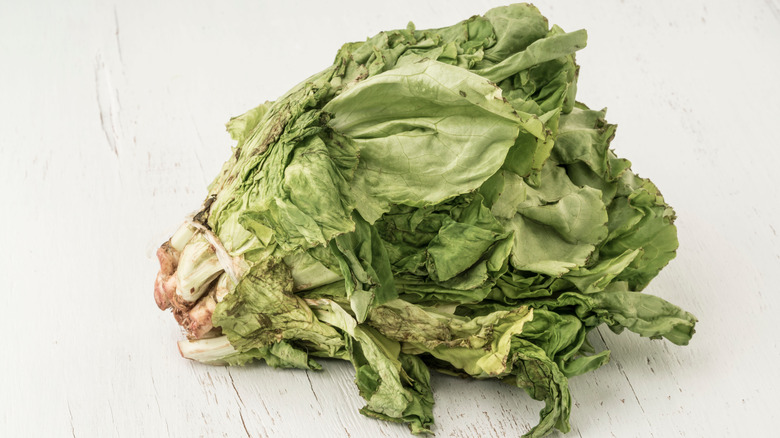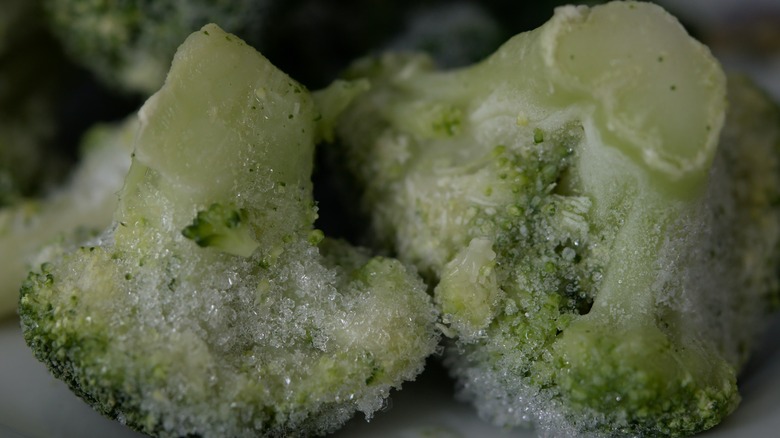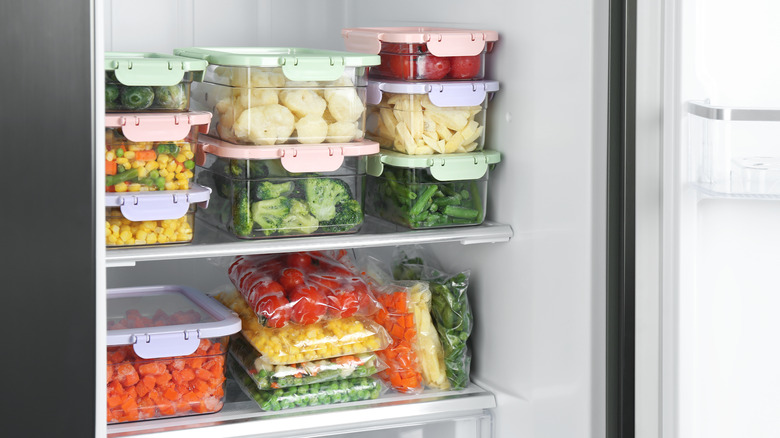Here's What To Do With Those Fresh Ingredients That Are On The Brink Of Going Bad
The frustration of witnessing fresh ingredients go bad is a familiar annoyance in kitchens across the world. After all, it's the delicate balance of timing and freshness of ingredients that often dictates the success of a dish. Nothing is worse than planning out a meal to cook only to encounter wilted greens, overripe fruits, or spoiled vegetables and realizing you'll then need to scramble to figure out a different option. Finding alternative solutions to extend the shelf life of perishable items not only minimizes food waste but also maximizes the culinary potential of each ingredient.
For fresh ingredients that are right on the cusp of going bad, there are a few options. Your first course of action should be to try and use the items quickly in various recipes. Bake a loaf of moist banana bread with those overripe bananas, or whip up a lemony pesto sauce with a bunch of that about-to-turn basil. You could also pickle vegetables that are soon to spoil or make a jam out of fruits on their last leg.
What you can freeze
In general, though, freezing ingredients about to go bad is the most convenient preservation technique. That's because nearly everything can be frozen. Proteins such as chicken, beef, or pork will keep for three to six months when frozen raw (although it's best to rewrap in airtight packaging for optimal results). The quality of fish and other seafood degrades each time it's frozen and thawed, so try to limit refreezing. However, fresh fish can last up to six months when frozen.
Fruit freezes exceptionally well but will often lose its texture when thawed. The good news is you can easily use frozen fruit in recipes and smoothies with no issue. Similarly, nearly all vegetables take well to being frozen, although it's a good idea to blanch leafy greens like kale, spinach, or cabbage first to preserve flavor and color.
Bread and baked goods resurrect well after freezing as long as they are wrapped in airtight packaging. Cookie and pie dough also freeze well.
Freeze with caution
Vegetables with high water content, such as lettuce, cucumbers, and raw potatoes, can be tricky to freeze. During the freezing process, ice crystals form in each cell of the vegetable, expanding and damaging the cell walls. This means the thawed ingredients will be pretty waterlogged and mushy.
Tread carefully when freezing dairy products. Although you can freeze most of them, the results may vary. Freezing can cause the water and fat molecules in dairy products to separate, leading to a grainy or lumpy texture upon thawing. Soft cheese like ricotta and cottage cheese also don't take well to freezing and won't have the same fluffy texture when thawed.
You should also avoid freezing eggs in their shells. If you do need to freeze eggs, you'll need to treat the whites and yolks separately. Separate whites and yolks and place the whites into tightly sealed freezer containers. Yolks, meanwhile, tend to gel when frozen, so beat in some salt or sugar to help slow the process.


